Sunday, April 3, 2016
Woman on Miyako Jima Island
I was updating my Second Life Arts page when I ran across Miyako Jima Island and couldn't resist stopping for a bunch of pictures. I had dressed up in a recent outfit from Blue Blood - one of my longstanding favorite stores - indulging in the first poofy-skirt she's made in a while! I have missed this style intensely, and this one is extremely well rigged with several layers of petticoat under the gorgeous top layer. I went full on cute quasi-Lolita (I'm showing way too much skin for a traditional Lolita!), filling out my look with a bolero from Faida & Fallen Gods, the most adorable little hat from Byrne that was sent out as a group gift, one of my favorite pig tails from Alice Project, and adorable boots from Bliensen + MaiTai.
Lolita is one of those complicated fashion trends based on an equally complicated book. Vladimir Nabokov's original novel is from the point of view of Humbert Humbert, an unrepentant narcissist and pedophile who targets a child, 12 year old Dolores Haze, and projects his sexual attraction onto her. He grooms her, takes advantage of the death of her mother to isolate her, and moves her around repeatedly while taking sexual advantage of her until she escapes him at the age of fifteen with the help of someone who tries to force her into pornography. She marries sometime within the intervening two years before reaching out to Humbert for money, and dies in childbirth when she's 17. Hers is a tragic and largely unspoken story; she exists only as perceived by Humbert, who continues to rape her even while he laments doing so. However, her name has become synonymous with the idea that very young girls have power over and seduce older men; like the similar "co-ed", the word Lolita in the US can be seen as a cover for predatory male behavior which is projected onto a lower-status and vulnerable person so as to move the guilt for manipulation, drugging, and rape away from the person perpetrating those wrongs. Whether Nabokov disagreed with his protagonist Humbert or not, a lot of society in general is content to blame Dolores for being abused.
The word in Japan came from the same root - Lolita as a term originated from the novel - but it was transformed through the life experiences of teenage girls not the desires of adult men, and so went in a very different direction. Lolita is a style of fashion based on Victorian and Edwardian clothing with an emphasis on modesty and quality; there is a doll-like quality to much of Lolita. Personally, I interpret that as the struggle most girls have with reconciling being a person who is objectified and a reaction to the growing sexualization of young girls, especially through the sexualization of the school uniforms many girls are forced to wear. Lolita is about concealing, about being pretty and perfect, about taking things associated with and attractive to girls and bringing them front and center. I don't know why I find the style - the poofs of skirts, the ribbons and bows, the sheer prettiness so attractive. I do know it seems to flow from the same place as my attempt to re-dedicate to kindness, my valuing of connection and support; all of them are overtly, even aggressively feminine things in a world that seems to be relatively hostile to feminine things. Lolita is one of the many reactions to living through the world as thinking, feeling people who have to reconcile our internal experience with an supportive external reality.
Watching a new detective show recently, I was struck with how the main female character is rewarded for identifying with masculinity, with toughness, with "having balls" and putting up with being deliberately embarrassed mocked. The show itself is set up reward her for those things even while isolating her from other women (the sole other woman character on the show is likewise isolated, but this time as "the cool girl" of geekdom). Them men have no such issues; men have relationships with each other that are overtly masculine and are rewarded for the lack of communication within the relationships by building work-arounds into the drama. There is the requisite character who sexually harasses pretty much every woman he meets and is treated like a lovable rogue, sometimes even "getting the girl" while women around smile indulgently and sexual harassment training is openly mocked. There is the emotionally reserved leader with his divorce(s), never giving praise, frequently giving critique. There is the goofy, ultra-intelligent man, though in this case he's much more sidelined than is typical. The story is about the woman, about her toughness standing up to the distant and demanding leader and managing the sexual harasser while existing in a world dominated by men, but there is no room for the softness of froth and most of the time her kindness blows up in her face - one time literally. I wish there were more stories that reward overt femininity in mixed-gender circumstances - softness and kindness are good things, but so often the narratives we tell there is no space for it.
( More pictures here. )
Credits:
Skin: Izzie's, Irene
Tattoo: Folly, Tintable Rainbow Sheen
Hair: Alice Project, Elena
Hat: Byrne, Espana Lace Hat (Group Gift)
Eyes: .:Soul:., Oculos
Eyelashes 1: SLink, Mesh Lashes
Eyelashes 2: Flugeln Brise, 05-A
Lipstick: Adore & Abhor, Shreveport Lips
Necklace: .:MANNA:., Passion
Wings: Deviance, Sidhe
Jewelry: Lazuri, Celeste Heirloom
Body: SLink, Hands, Feet
Nails: La Boheme, Ancient Tides
Jacket: Faida & Fallen Gods, Ravel Bolero
Outfit: Blue Blood, Fanny
Bloomers: Goji, Short Bloomers
Shoes: Bliensen + MaiTai, Mazurka
Poses: Grafica,
Location: LEA13: Miyako Jima Island
Windlight Settings: Sim Default
Water Settings: Sim Default
Photographed by Deoridhe Quandry
Post processing: Cropping
Subscribe to:
Post Comments (Atom)

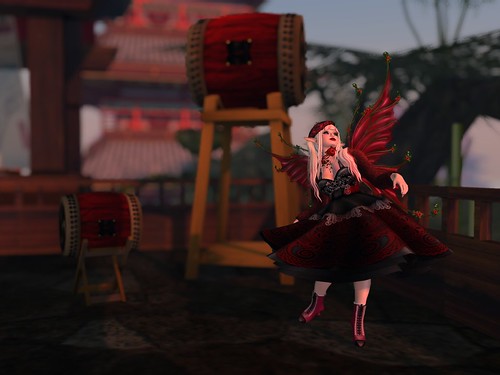
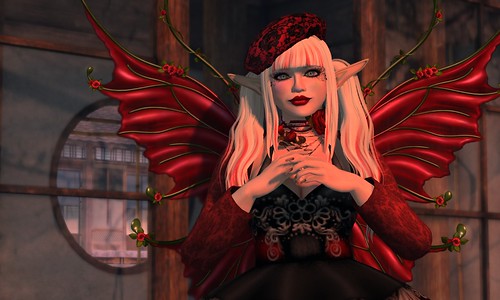
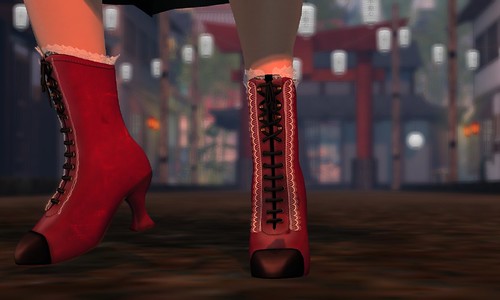
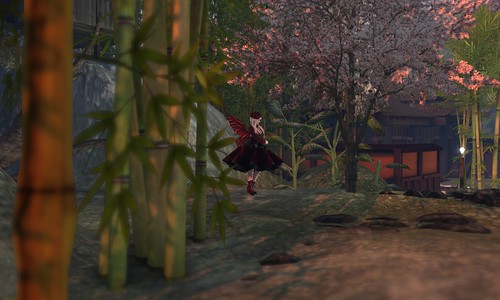
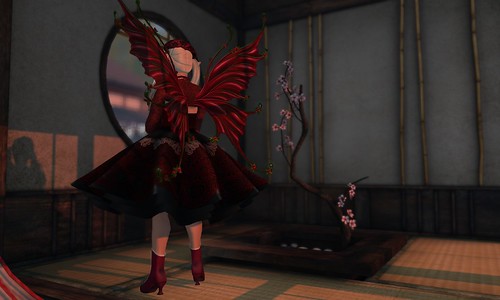
Thankyou!!
ReplyDeleteYou're very welcome!
Delete